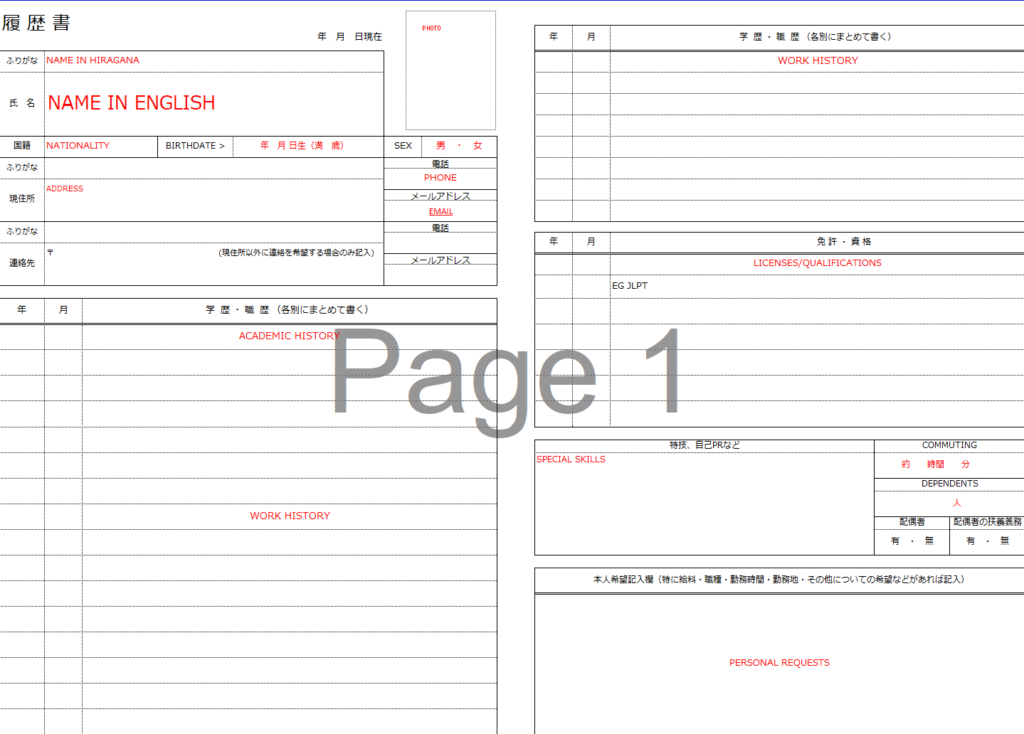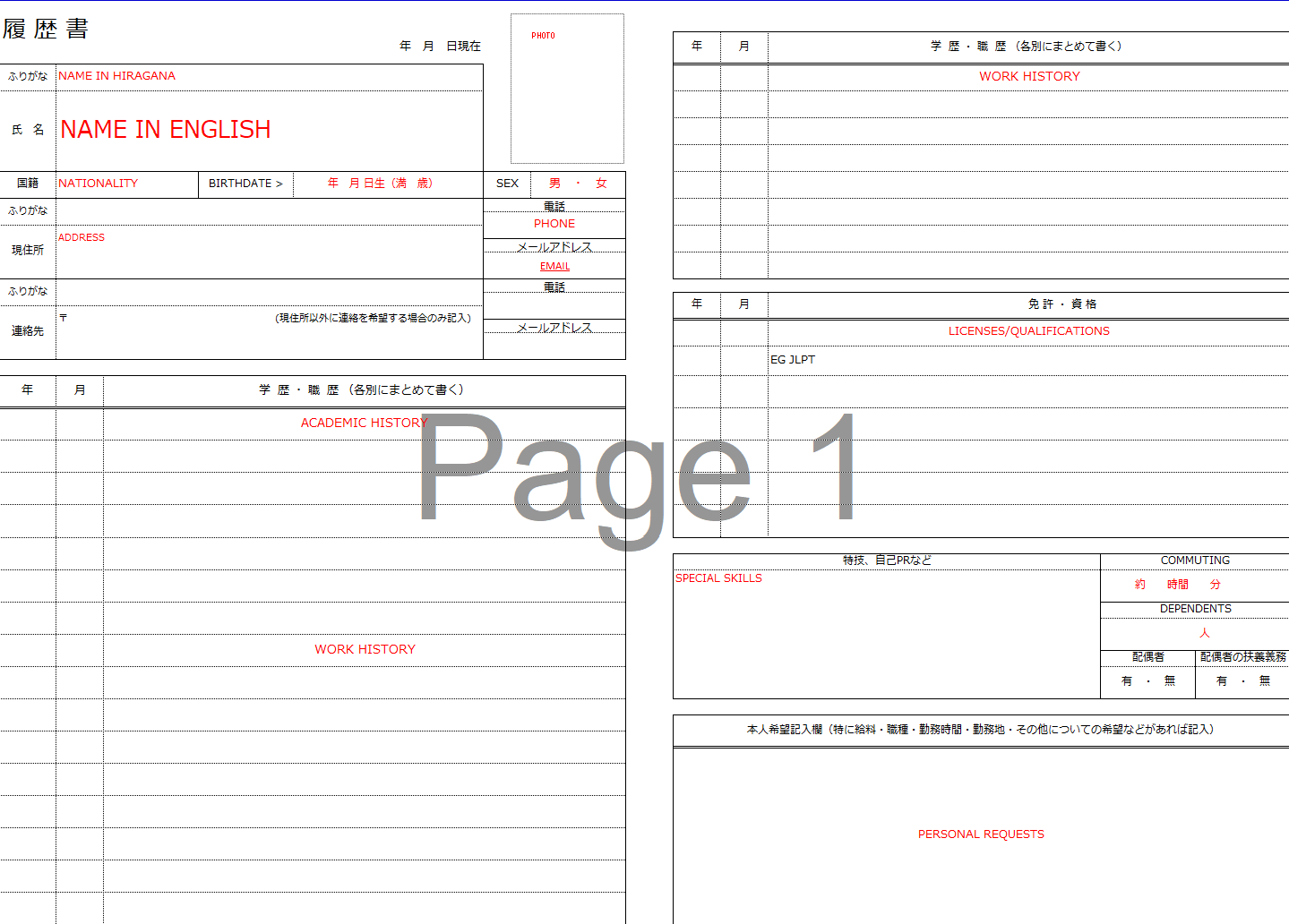If you are hoping to make a career in Japan, then you will likely need to apply to a multitude of Japanese companies before you find your ideal job. Some companies with a more international mindset will accept an English CV, however many companies will look upon your application much more favorably if you accompany your application with a Japanese resume.
A Japanese CV is quite different from an English CV and thus you must take care to use correct, high-level Japanese and the correct format. If you would like a native Japanese translator to translate your resume from English into the Japanese format, or if you simply need someone to proofread your Japanese CV, Omakase Helper can assist you.
There are two kinds of resumes used in Japan, the rirekisho and the shokumu keirekisho. The rirekisho gives a brief overview of your background and working history, while the shokumukeirekisho is submitted as a separate attachment which goes into greater detail about your working history.

The Rirekisho
The objective of the rirekisho is to convey who you are, what skills you can bring to the company and your educational background, as well as briefly stating your past working experience. Consider it the first impression, an introduction to yourself to draw the attention of the company.
It is best to format your Japanese resume using the “JIS standard”. You can find a template here.
The basic format is as follows:
Section 1: Basic Information
- Name (English underneath, Hiragana on top)
- Address
- Age
- Gender
- Nationality
- Telephone number
- Email address
- Resume submission date
- Include a professional style photograph
Section 2: Academic Background
Use the heading “学歴 (Academic Background)”. List in chronological order:
- High school name, country
- University name
- Department of studies
- Major
Section 3: Working History
Use the heading “職歴 (Working history)”. For each company you have worked for, list:
- Company name
- Department (most recent)
- Position title (most recent)
- Working dates and reason for leaving the company (if you are currently employed, write “現在に至る”)
Section 4: Licenses and Qualifications
List each license/qualification you possess along with the date you received the qualification.
Section 5: Special skills
Use this section for self-promotion. Highlight anything that might make you appear a more attractive candidate.
Section 6: Commuting time
Enter your current or desired commuting time. You may leave this blank.
Section 7: Dependents
Enter number of dependents.
Section 8: Conditions
This is not mandatory, but you can write your desired conditions (eg salary) here. Write “貴社の規定に従います (in accordance with your company’s regulations)” if you have no special requests.
TIPS:
- Make sure you use a standard font which is easy to read and keep the same font for the entire document
- Wear formal attire in your photo, including a tie
The Shokumu Keirekisho (1-3 pages)
Use this separate document to go into detail about your employment history.
Include the title (職務経歴書) at the top in a bigger size font.
Then include the following:
- Name
- Overview (3-4 lines) – A brief description of the kind of work you have done in the past and what your strengths are. You can mention why you are applying for the position and how you can benefit the company.
- Detailed history:
- An overview of the company:
- Company name (企業名)
- Business type (業務内容)
- Foundation (設立)
- Capital stock (資本金)
- Number of employees (従業員)
- Profit (売上高)
- Business contents (事業内容)
- The work you did in said company:
- Duration of employment (職務に携わった期間 ○年○月~○年○月)
- Department (配属部署)
- Tasks (業務内容)
- Results (実績, 成果)
- An overview of the company:
- Skills:
- List any relevant skills, qualifications, computer or programming skills, industry achievements.
- Persuasive section
- You can use this space to appeal to the company. Detail your motivation and enthusiasm for the job and what you can bring to the table. Demonstrate how you have utilised your skills in the past. You can also include the reason why you are applying to the company.
Need a Japanese resume written from scratch?
Need your current Japanese resume proofread by a native speaker?


Comments are closed